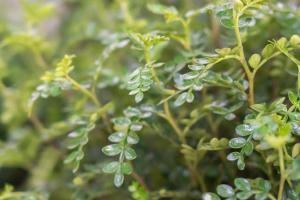Can I Use Ground Soil for Potted Plants?
If you are looking to start a garden or want to add some greenery to your home, you may be wondering whether or not you can use ground soil for potted plants. The short answer is yes, you can use ground soil for potted plants, but there are a few things you need to consider before doing so.
The Pros of Using Ground Soil for Potted Plants
One of the biggest advantages of using ground soil for potted plants is that it is usually readily available and free. If you have a garden, you can simply use some of the soil from your beds to fill your pots. Additionally, ground soil can contain more nutrients and organic matter than commercial potting mixes, which can help your plants thrive.
Another advantage of using ground soil is that it is more sustainable and eco-friendly. By using available resources instead of a commercial product, you reduce your carbon footprint, cut down on packaging waste, and save transportation costs.
The Cons of Using Ground Soil for Potted Plants
Although using ground soil for potted plants has some undeniable benefits, there are also a few drawbacks that you need to be aware of. One of the biggest challenges is that ground soil can be too heavy and dense for potted plants, which can lead to drainage problems and root rot. Additionally, ground soil can contain weed seeds, pathogens, and other contaminants that may affect the health of your plants.
Another potential issue is that ground soil can lack the proper balance of nutrients and pH levels that potted plants require. Commercial potting mixes are formulated with specific blends of peat moss, perlite, vermiculite, and other ingredients that provide adequate drainage, aeration, and nutrition for plants. Without these components, your potted plants may struggle to grow and develop.
Tips for Using Ground Soil for Potted Plants
If you still want to use ground soil for your potted plants, there are some steps you can take to maximize your success. First, make sure to screen the soil thoroughly to remove any large rocks, roots, or debris. You can also mix in some organic matter, such as compost or aged manure, to improve the texture and nutrient content of the soil.
Another tip is to use a well-draining potting mix or add some perlite or sand to the soil to improve drainage. This can prevent water from pooling in the bottom of the pot and suffocating the roots. Additionally, you can supplement the soil with some fertilizer or organic nutrients to provide your plants with the essential elements they need to thrive.
Conclusion
While using ground soil for potted plants can be a viable option, it is important to weigh the pros and cons and take the necessary precautions to ensure success. By following these tips and being mindful of the potential risks, you can create a healthy, sustainable, and beautiful garden in your home or outdoor space.

 how many times do yo...
how many times do yo... how many planted tre...
how many planted tre... how many pine trees ...
how many pine trees ... how many pecan trees...
how many pecan trees... how many plants comp...
how many plants comp... how many plants can ...
how many plants can ... how many plants and ...
how many plants and ... how many pepper plan...
how many pepper plan...
































